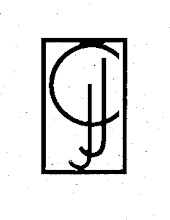 I know a couple of people who recently purchased German Shepherd pups from breeders. You can probably guess my reaction to this method of dog acquisition, but I bit my tongue in both cases. As a friend, in that moment, my responsibility was to express delight for the purchase.
I know a couple of people who recently purchased German Shepherd pups from breeders. You can probably guess my reaction to this method of dog acquisition, but I bit my tongue in both cases. As a friend, in that moment, my responsibility was to express delight for the purchase. Yesterday, I learned that a mutual friend had given a training book to one of the new puppy owners. It was a bestseller when it was first published and was written by the Monks of New Skete. My brain crinkled at this news; I vaguely remembered something unsavory about those monks, but because I couldn’t recall any details, I kept mum. “What a nice gift!” I think I managed to say.
Now this morning I’m reading an essay by J. C. Hallman that contains—insert drum roll—the Monks of New Skete. And though they may provide excellent training advice, based on this one anecdote about just one of their shepherds, I’m not interested in hearing it.
Hallman spent time at the monastery while working on a project about religious sects and William James. While there, he witnessed a young dog giving birth to her first litter. Here’s what I learned through Hallman:
• Breeding dogs is the main source of income for the monastery.
• According to an X-ray, the dog had only one pup, a rare number that posed a financial burden to the monks. It meant costly labor with little return (profit).
• When the dog’s birthing started to go awry, another monk stepped in to help. But not for long: Matins held priority over dog emergencies.
• Without a vet or anesthetic, the monks cut the dog in order to open up the birth canal for the emerging pup. (Perhaps this is the norm for all breeders, but isn’t there a less painful way to achieve the same results?)
The newborn turned out to be a stillbirth, so I don’t know how the monks would have treated him otherwise. As Hallman writes of the monks in “Becky Hungry Coyote” (part of the anthology WOOF! Writers on Dogs):
“They were eminently practical about their business… . Their females were ‘bitches,’ their litters were investments, and in general the monks were suspicious of the kind of canine fundamentalism that could result when the master-dog relationship served as a substitute for alienated relationships among people.”
Hrrmph. Between dogs as commodities and dogs as substitutes, what about dogs as dogs? Why can’t we recognize them simply as creatures with whom we share ourselve
 s, just as we do with friends or family? Not canines as proxies, but canines in their own right. Here is where I believe the Monks of New Skete, like so many people, draw the line between humans and animals. It’s the same line that confounds me about a number of religions.
s, just as we do with friends or family? Not canines as proxies, but canines in their own right. Here is where I believe the Monks of New Skete, like so many people, draw the line between humans and animals. It’s the same line that confounds me about a number of religions. I’m open to hearing a perspective about the Monks of New Skete that will alter my first impression of them, but for now, I’m happy on my side of the line.
[Pics from 321Dogs.com and The Witness.]
A Second Impression
Hmmm. While choosing links and pics for this post, I happened upon Morgan Van Wyck’s article, “The Monks and Dogs of New Skete.” In it she reports that the monks try to live “a life without division.” They practice a discipline borrowed from Rilke known as “inseeing”—the crossroads of the contemplative mind with the natural world. As one monk puts it:
“Inseeing is being willing to look at another living thing in a way that allows for seeing it in and of itself. It is respecting this ‘other’ for what it is, without trying to change it or own it. In this struggle to deepen one’s understanding one is enriched, given life, no matter how limited one’s success in this endeavor.”
Well, that’s an alternative perspective, isn’t it? I suppose even monks can fall short of their philosophy and their better selves. I know I do.



No comments:
Post a Comment